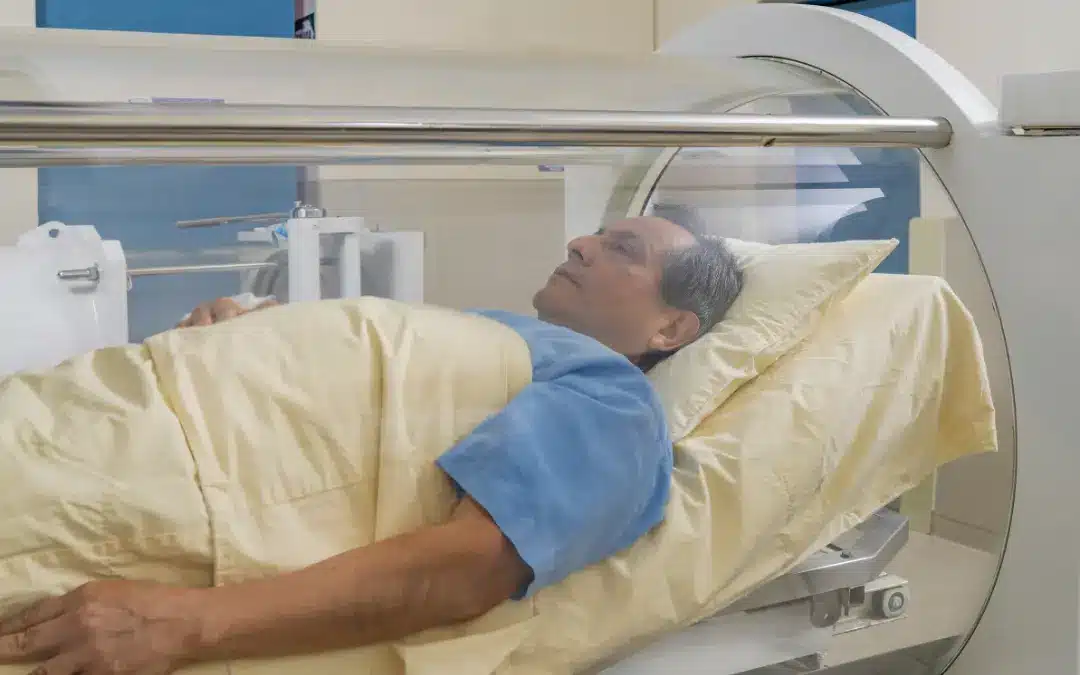August 26, 2023

Amidst the intricate web of medical advancements, a groundbreaking therapy holds the promise of transforming lives marred by Traumatic Brain Injury (TBI). Hyperbaric Oxygen Therapy (HBOT), recognized for its versatile applications, emerges as a beacon of hope for those seeking healing from this often-debilitating condition.
Hyperbaric Oxygen Therapy (HBOT) involves breathing oxygen at higher-than-atmospheric pressure within a pressurized chamber. While it gained prominence for treating decompression illness in divers during the 1930s, its spectrum of application has broadened significantly. Today, HBOT boasts 13 FDA-approved uses, encompassing conditions such as gas gangrene, air embolism, and diabetic ulcers.
TBI, often arising from head injuries, poses significant challenges to conventional treatment due to the intricate nature of brain physiology. Though rigorous double-blind placebo-controlled trials remain elusive, a body of research supports the efficacy of HBOT in TBI cases. Notably, HBOT has exhibited potential to dramatically enhance symptoms of chronic TBI, even years after the initial trauma. This assertion defies long-standing beliefs that post-concussion symptoms, persisting beyond 6 months, result from irreversible brain damage.
HBOT’s effectiveness in addressing diverse conditions might seem perplexing at first glance. However, a deeper dive into its mechanisms sheds light on its multifaceted healing power. The treatment involves hyper-oxygenating body tissues temporarily, instigating a cascade of healing processes. These processes encompass anti-inflammatory effects, reduced edema, improved blood perfusion, stimulation of the immune system, increased antioxidant systems, stem cell mobilization, axonal regrowth, and modulation of genes linked to inflammation and healing.
To comprehend the impact of HBOT on TBI, one must grasp the intricate pathophysiology of the condition. TBI triggers a series of events, including inflammation and neuronal death. Swelling within the confined space of the skull exerts pressure on the brain, diminishing blood flow and exacerbating damage. The result is a complex interplay of injured and stunned neurons, contributing to the wide range of post-concussion symptoms.
A poignant case study underscores HBOT’s potential in TBI treatment. A 55-year-old man with a history of multiple concussions embarked on an HBOT journey. This patient, who had endured a lifetime of bipolar disorder, experienced remarkable improvements in focus, emotional stability, and communication abilities. Subsequent brain-perfusion scans revealed normalization of previously abnormal areas, solidifying the idea that HBOT can heal neurological damage even decades after injury.
HBOT, recognized as a regulated medical device, offers an accessible avenue for TBI treatment. A protocol involving 40 one-hour sessions of mild HBOT delivered at 1.3 to 1.5 ATM, facilitated through portable oxygen concentrators and simple vinyl chambers, showcases its simplicity and efficacy.
As the understanding of HBOT’s potential for healing continues to evolve, individuals grappling with neurological conditions find reason to hope. The transformative power of HBOT stands as a testament to the resilience of the human body and the boundless potential of medical science. Though challenges persist in terms of widespread availability, the dawn of hope has arrived, promising renewed vitality for those navigating the path to recovery.
Goderez, B. (2019, May 28). Treatment of Traumatic Brain Injury With Hyperbaric Oxygen Therapy. Psychiatric Times. https://www.psychiatrictimes.com/view/treatment-traumatic-brain-injury-hyperbaric-oxygen-therapy
Share on:
A free, open discussion group to explore hyperbaric oxygen therapy, compare home chamber brands, access expert info, and get exclusive member discounts.